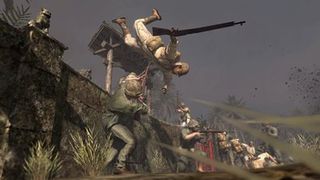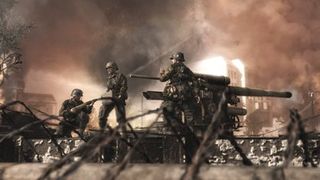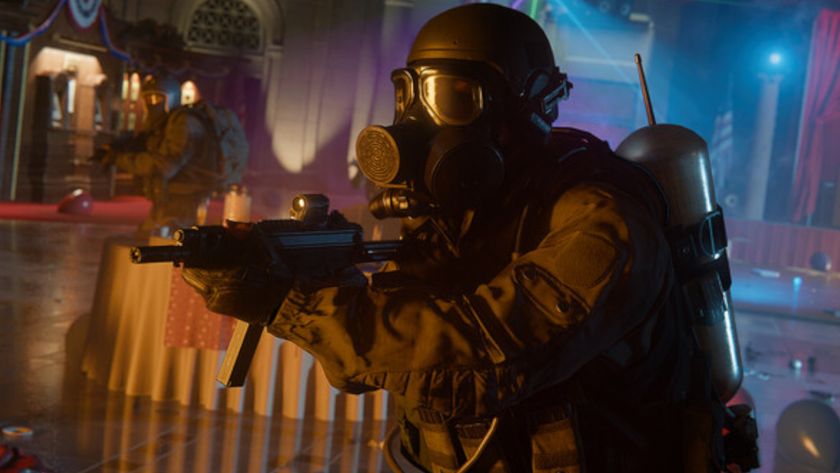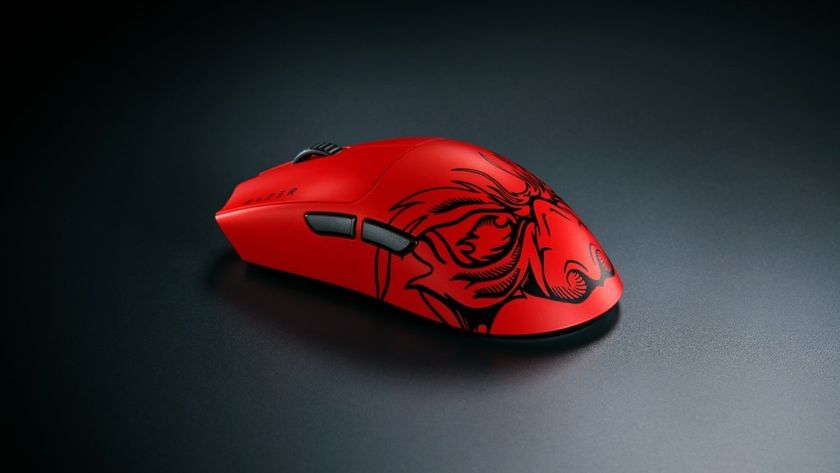Like Star Trek films we’ve come to expect the Call of Duty games to run one good, one bad. However, now that developer Treyarch sat us down in front of the game, we’ve removed our cynicism goggles to look upon the series with fresh, blood-spattered eyes. Dropping the number system, Call of Duty: World at War is a new start for the CoD 3 developers – having been granted a lot more time to make the damn thing, and specialising on parts of the war not instantly recognisable to your average gamer – stuff like the Russian push on Berlin or, as we were recently shown, the conflict in the Pacific.

The raid of Makin Island, one of the first levels, starts with you tied to a chair, faced with a smug Japanese general. He puffs cigar smoke in your face, before turning to one of your comrades and shouting appropriately phrased Japanese at him. All standard fare until he takes that cigar and stubs it in your mate’s eye, the blood-curdling scream making even fellow enemies squirm, before they move into full-blown shock when he slits your comrade’s throat, spattering blood across the wall and the dead man’s shadow. As the general grabs you by the hair and readies to kill you, there’s shouting, footsteps and a knife in your captor’s back. A marine pulls you to your feet, assures you you’re safe and shoves a gun into your hand, asking if you can fight. As there isn’t a “bugger this” option, you’re well on your way into the most brutal portrayal of war you’ve ever seen.
“We didn’t want to make another World War II game. We wanted to make something new, something different,” smiles Mark Lamia, Treyarch studio head. “We knew with this Call of Duty that people didn’t want to play the same WWII game, and we didn’t want to make it – and we haven’t.” The skid-mark Medal of Honor: Rising Sun and bog-standard FPS MoH: Pacific Assault portrayed this side of WWII as a rather linear journey against some angry-looking Asians on a glorious summer holiday, but World at War continues CoD’s tradition of action-packed gameplay rooted in historic conflict – and the reality of a situation that was blood-drenched and ugly as sin.

Both in our history lessons and in most WWII games there’s a heavy focus on classical tank and infantry combat. Here, we see a rich, pine-laden Pacific and a different war, thanks to the unconventional style of warfare use by the Japanese. While the banzai tactic of running, swords drawn, into the enemy is well-known, the Japanese fought in a brutal, mano a mano fashion. The Bushido code, which valued honour over life, drove Japanese soldiers to fight to their last breath, no matter how dire and hopeless the situation was. To put it in Lamia’s words, “They were taking no quarter, and none was given.
Sign up to the 12DOVE Newsletter
Weekly digests, tales from the communities you love, and more
Most Popular







